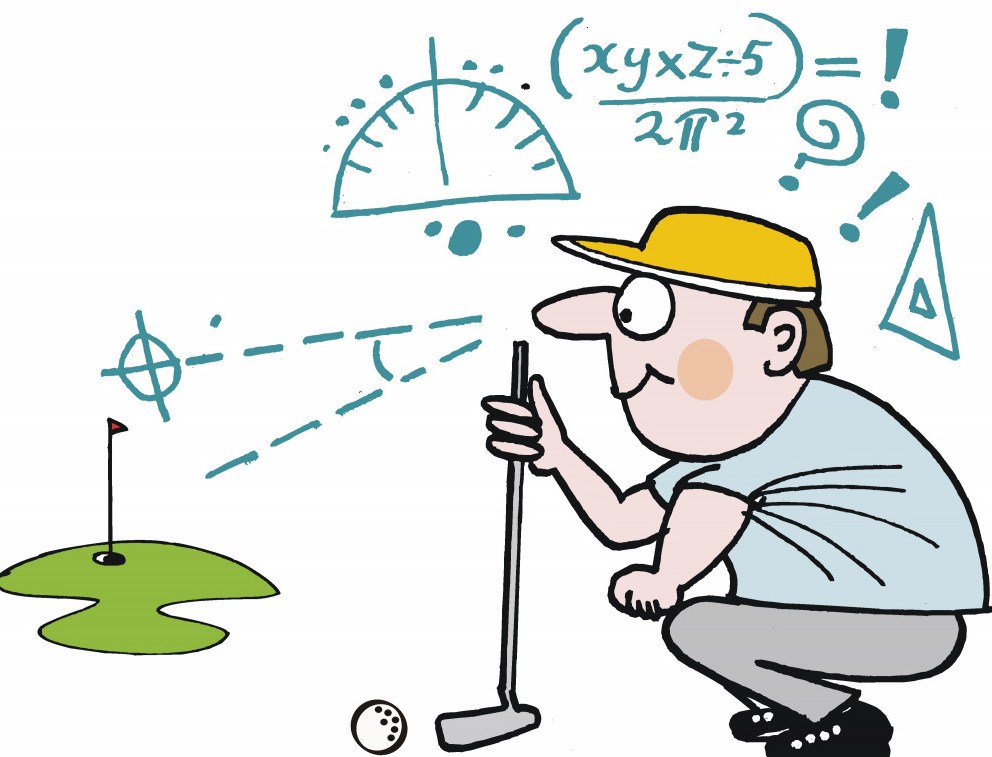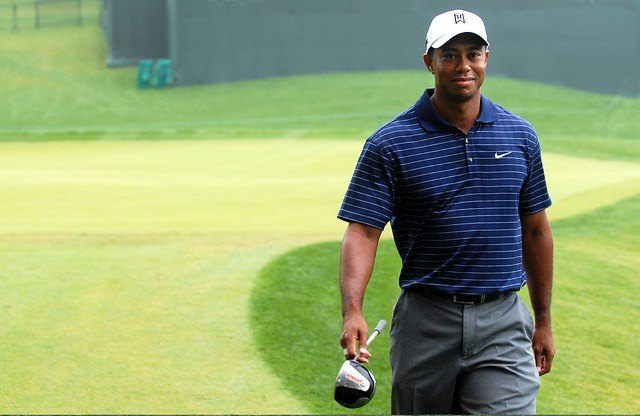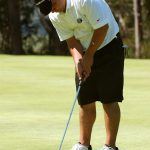I was playing recently with a few friends and was struck by the differences in what happens before any of us actually hit a shot. From those who follow the Arnold, “hit it, find it, hit it again” style of golf, to others who look like they may have fallen asleep addressing the ball, there are all sorts of ways to prepare. This got me thinking about just what goes into a pre-shot golf routine and what actually makes a difference in terms of success.
- Take your time, but not too much
- Practice swings might not be necessary
- A clear head is key
What Makes A Great Pre-shot Routine?
This is something of an ironic theme for me because I have never been one to spend a long time before hitting the ball. I generally don’t do a practice swing at all for full shots and tend to be fairly rapid in choosing a club, lining up and hitting. This has both good and bad elements. Obviously, I am not that annoying golfer in front of you who takes hours getting round the course. I also don’t tend to over think most of my shots, at least as I get further from the green, so not too much time for any negative mental images.
However, I could certainly do from taking a little more time. For example, I often barely glance at exactly where I am aiming. This means that I sometimes hit what I think is a great shot and see it fall left or right of the target.
Should I slow down then? Probably, yes, but as in all things, balance is important. I often see golfers (generally not the best ones) taking an absolute age before hitting a fat/thin/slice or hook. They might take four or five practice swings and then wait for 20 seconds behind the ball before actually starting the backswing. If taking more time is better, what’s wrong with this picture?
Do You Need a Practice Swing?
Firstly, let’s look at the practice swing. Is this an important part of an effective pre-shot routine? Well, it might be, but only if it serves a purpose. So many golfer go through the motions with 3 or 4 practice swings that look absolutely nothing like their actual swing. What’s the point? A practice swing is there to make your actual swing as effective as possible. If you are going to do one or two, make them as close as possible to the shot you will hit. Get in position, play the shot in your mind and swing as if you are going to hit the ball. If not, don’t bother.
A practice swing can also simply be a way of mentally walking through the shot you are about to hit. If you watch many professional golfers, you can see they are doing this. They are rehearsing the shot they will hit, getting ready, feeling how it will work. This isn’t swishing the club around for the hell of it. It is playing a role in getting the player ready to produce a quality golf shot.
A practice swing is also important if you find yourself on an uneven lie of with less than solid footing. It lets you test the ground and avoid any unwelcome surprises like falling flat on your back when your feet sip from under you!
So if the practice swing isn’t always necessary, what elements should always be part of the pre-shot routine? Let’s assume you aren’t playing with a caddie and have to do everything yourself. Walking through what happens as you get to your ball should help put together a checklist of things to be done.
The first thing you should notice is the lie of the ball. Maybe it is sitting perfectly on the fairway, but perhaps it is in a divot, in rough, on a bare lie or whatever. Next is distance. You might be someone who uses on course markers and “guesstimates” from there. Perhaps you simply check on your GPS watch. Personally, the first thing I will do is get my rangefinder out and zap the flag. I will then quickly adjust for slope and wind/weather. If you use a distance chart, this might be when you consult it too.
Once this is done, I think the next thing to do is to pick a club and actually take it out of the bag. Having a club in your hand creates a tighter focus on the shot to come in my opinion.
The Perfect Pre-shot Routine
This is when the immediate pre-shot routine comes into play. A lot of golfers like to get a yard or two behind the ball and focus on the hole. This is a good idea and something I should probably do. It helps to pick the right line. This line is going to depend on what your usual shot shape as well as wind conditions. You could also have a look at things like which way the green or fairway is sloping as well as where the trouble is and which side is the safe miss. Generally, this is something you might well have in your head already and probably something that you are looking at as you walk up the fairway to your ball anyway.
Next, step up to the ball. Get into your stance with the clubhead a couple of inches behind the ball. Look up at the line and make sure you are lined up where you intended. Take your practice swing or two if that is your thing. Now it is time to pull the trigger. Step forward to the ball, check the line one more time, settle and swing. I really think waiting too long here is an error. I have seen lots of poor golfers wait for ages but in all honesty, very few good ones (although there are some.)
The whole routine should be well under a minute in my opinion and probably under 30 seconds. There are practical reasons for this in terms of pace of play, but it is also linked to the other key part of preparing to hit the ball and that is your mental frame of mind.
Perfecting the Mental Game
All the physical preparation in the world is useless of your mind isn’t in the right place before hitting the ball. I personally am not a fan of swing thoughts, at least the way that most golfers use them. The guy who is addressing the ball and running through a shopping list of things to remember in his swing is destined to fail. However, having one clear idea can be great and perhaps even the most important element of a pre-shot routine.
For example, I have been working on my driver over the last year or so. It had become a liability after being a strength and is slowly becoming a strength again. I certainly work on things like grip and stance but as I address the ball, I am not worrying about any of this, or even the hole itself. All I am thinking is ‘wide’. I have the image of taking the club back nice and wide and the rest tends to fall into place. When I am on the tee, this one thought is perhaps the most important part of my routine. If I aim more or less in the right direction and swing wide, the result is more often than not pretty good.
A pre-shot routine is a very personal thing. Ultimately though, it all serves the same purpose: creating the best possible shot. Finding a way to get mental clarity and picking the line you want to hit are the two keys and as long as you find a way to do this repeatedly, you are doing the right job.






